As humans ventured out to explore their planet, they needed various units of measurement for distances and lengths. Initially, these measurements were inconsistent because different cultures had their own unique ways of measuring. However, in 1791, French scientists introduced a universal unit of length that is still widely used today – the meter (derived from the Greek word “measure”).
However, as the early 20th century arrived, people began to shift their focus towards studying the vast cosmos. They soon realized that the existing metric system was inadequate for measuring the immense distances found in the universe. While it is possible to measure the distance from Earth to the Moon or Mars in kilometers, attempting to measure the distances to other planets or even stars would result in astronomical numbers with countless zeros.
That’s when scientists came up with the concept of “light years”.
How many kilometers are in a light year?
Within the span of a single second, light photons cover a distance of 300,000 kilometers. A light year, on the other hand, represents the total number of kilometers that light travels within a span of 12 months. In terms of kilometers, this would amount to approximately 9,460,730,472,580.8 kilometers, which can be rounded to 9.46 x 10^15 kilometers.
Although the use of “light years” is more convenient than dealing with such large numbers in kilometers, it’s still possible to approximate their values:
1 light second is approximately equal to 300,000 kilometers.
1 light minute is approximately equal to 18 million kilometers.
1 light hour is approximately equal to 1,080,000,000,000 kilometers.
1 light day is approximately equal to 26,000,000,000,000,000 kilometers.
1 light week is approximately equal to 181,000,000,000,000 kilometers.
1 light month is approximately equal to 790,000,000,000,000,000 kilometers.
What is considered excessive?
Assuming that the spaceship is traveling at the speed of light (which is approximately 16.8 kilometers per second), it would take 18,000 years for the ship to travel one light year. With this speed, the ship could fly through our galaxy, the Milky Way, which has a diameter of about a hundred thousand light years, for almost 2 billion years!
The closest star to the Sun is Proxima Centauri, which is approximately four light-years away. When converted to kilometers, this distance is incredibly large.
However, if we compare the distance from Proxima Centauri to the nearest galaxy, the Andromeda Nebula, the star seems relatively close, as Andromeda is two and a half million light years away from the Milky Way. It would take a spaceship 35 billion years to reach there.
What other purposes can light years serve?
Utilizing light-years aids in comprehending potential locations within the cosmos to search for intelligent civilizations. This method allows scientists to determine suitable regions for transmitting radio signals and areas that are not.
Here is how it functions: the speed of light is equivalent to the velocity of a radio signal. Consequently, it is futile to dispatch messages that will arrive thousands or even billions of years later. Instead, it is logical to seek out “neighboring” entities by sending signals that will reach them within a single human lifetime.
How many Earth years are equivalent to one light year?
The misconception that a light year measures time is fundamentally incorrect. A light year is a unit of distance and is not related to Earth’s time system. It represents the distance that light travels in one year on Earth.
A light year is defined as the distance traveled by light in one year. The International Astronomical Union has provided a definition for the light year, stating that it is the distance light travels in a vacuum, unaffected by gravity, over the course of a Julian year. A Julian year is equivalent to 365 days. This is the accepted interpretation in scientific literature.
In professional literature, distances are often expressed in parsecs or kilo- and megaparsecs.
There are specific conversions for measuring the distance in light hours, minutes, days, etc.
- A light year measures approximately 9,460,800,000,000,000 kilometers,
- One month is equivalent to 788,333 million kilometers
- A week corresponds to 197,083 million kilometers,
- A day is approximately 26,277 million km,
- One hour is equal to 1,094 million kilometers,
- A minute is approximately 18 million kilometers,
- A second is about 300,000 kilometers.
That’s fascinating! It takes light about 1.25 seconds to reach the Moon from Earth on average, and a little over 8 minutes to reach the Sun.
The star Betelgeuse, located in the constellation Orion, is expected to explode in the near future.
When observing the explosion today, it is important to note that the actual explosion occurred during the time of Ivan the Terrible…
Measurement of Time
An Earth year represents the time it takes for the Earth to complete one orbit around the sun. In terms of distance, one light year is equivalent to 63,242 Earth years. However, it’s important to note that this measurement specifically applies to Earth and may vary for other celestial bodies such as Mars or Jupiter. A light year is a unit of measurement used to calculate the distance between two celestial objects. Despite the significant disparity between light years and Earth years, both measurements pertain to distance.
The vast distances between stars make it impractical to measure them in standard units like kilometers or miles. Instead, astronomers use specialized measurements to describe these immense distances. For example, the minimum distance from Earth to Mars is said to be 55.76 million kilometers. However, when it comes to measuring the distances to stars, things become even more complex. Astronomers typically use units like light-years and parsecs.
An astronomical unit is a measurement used for objects within the solar system and nearby celestial bodies. It is defined as 149,598,100 kilometers (plus or minus approximately 750 kilometers), which is roughly the average distance from the Earth to the Sun. Interestingly, modern observations have shown a gradual increase in this value of about 15 centimeters per year. This could be due to the Sun losing mass through the solar wind.
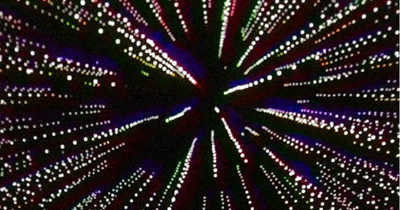
A light-year is the measurement of the distance that light travels within the span of a year. In terms of meters, it is equivalent to 9,460,730,472,580,800. It’s fascinating to think that the light we observe from the stars on a clear night has traveled for countless centuries to reach our planet, with some of those stars no longer even existing.
A parsec, also known as the “parallax of an angular second,” is the measurement of the distance at which the average radius of the Earth’s orbit (perpendicular to the line of sight) is seen at a one arc second angle. Simply put, a parsec is equal to 3.26 light-years.
What’s intriguing is that while the concept of a light-year is commonly used in popular science and fantasy literature, parsecs are typically reserved for professional writings and research.
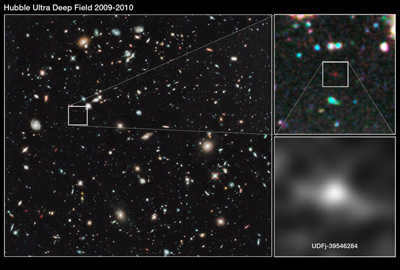
(The farthest galaxy from Earth, Galaxy UDFj-39546284, is located 13.3 billion light-years away and appears as a small red dot in an image captured by the Hubble telescope )
Alpha Centauri, which is 4.37 light-years away from Earth, is the closest star to us. However, the farthest galaxy from Earth (as of December 2012) is a staggering 13.3 billion light-years away! It is fascinating to think that when the sun of this very galaxy (known as UDFj-39546284) eventually goes out, humanity will not be aware of it for a considerable amount of time.
We often receive intriguing questions that require unconventional answers. One such question can be seen in the title. How many Earth years are equivalent to one light year? The answer may disappoint you, as it is none. How is that possible?
The reason is that a light year is not a unit of time, but rather a unit of distance. Specifically, a light year represents the distance that light travels in a vacuum, unaffected by gravity, over the course of one Julian year (365.25 standard days or 31,557,600 seconds), as defined by the International Astronomical Union.
Now let’s calculate the distance of a light year. We can do this by multiplying the speed of light, which is 300,000 kilometers per second, by the number of seconds in a year, which is 31.56 million. This calculation gives us the enormous figure of 9,460,800,000,000,000 kilometers (or 9,460,000,000 million kilometers). This immense distance is equal to one light year.
- 1 light month is approximately equal to 788,333 million kilometers.
Despite its name being similar to the time period “year,” the light year is not a measure of time but rather a measure of distance. This unit is used to quantify vast distances.
A light-year is a non-standard unit of length. It represents the distance that light can travel in a vacuum within one year, which is equivalent to 365.25 days or 31,557,600 seconds.
The comparison between the light year and the calendar year became prevalent after 1984. Prior to that, the distance traveled by light in one tropical year was referred to as the light year.
The exact value of the tropical year cannot be determined, as it depends on the angular velocity of the Sun, which varies. A rough approximation is used for the light year.
There is a slight difference in the calculations between the tropical light year and the light year based on the Julian calendar, approximately 0.02 percent. However, since this unit is not used for precise measurements, there is no practical distinction between them.
The light-year is commonly used as a unit of length in popular scientific literature. In astronomy, however, another unit called the parsec is used for measuring large distances. The parsec is calculated based on the average radius of the Earth’s orbit and is equal to 3.2616 light-years.
Calculation and Measurement
The computation of a light-year is directly associated with the velocity of light. In physics calculations, it is generally assumed to be 300,000,000,000 m/s. The precise value of the speed of light is 299,792,458 m/s. That is, 299,792,458 meters equates to only one light-second!
The distance to the moon is roughly 384,400,000 meters, signifying that a light beam will arrive at the moon’s surface in about 1.28 seconds.
The distance from the Sun to the Earth is 149,600,000,000,000 meters. Hence, it takes slightly less than 7 minutes for the Sun’s ray to reach the Earth.
Consequently, there are 31,557,600 seconds in a year. By multiplying this figure by the distance equivalent to one light-second, we ascertain that one light-year equals 9,460,730,472,580,800 meters.
1 million light-years is equivalent to 9,460,730,472,580,800,000,000 meters.
Astronomers estimate that the diameter of our Galaxy is roughly 100,000 light years. Therefore, distances measured in millions of light years are not applicable within our Galaxy, but rather for measuring distances between galaxies.
The farthest cosmic distance from Earth that can currently be measured is the distance to the edge of the observable Universe, which is approximately 45 billion light years.
Photography has a concept known as the golden hour, which is a period of time when it is easier to capture beautiful pictures. There are four such periods every 24 hours: two golden hours and two blue hours. Learn more about how to take advantage of these times and capture stunning photos in our article.

Photographs captured during the magical golden hour / Picture: Alisa Smirnova, Photosklad.Expert
The golden and blue hour are closely connected to the sun’s movement. The golden hour refers to the period after sunrise and before sunset, while the blue hour occurs after sunset and before sunrise. The golden hour is considered the perfect time for capturing stunning portraits, while the blue hour is ideal for photographing breathtaking landscapes.
What is the golden hour in photography
The golden hour in photography is often described as a time when the sunlight takes on a beautiful, golden hue. While this may sound poetic, there are actually two practical benefits for photographers during this time:
Firstly, the sun is positioned quite low above the horizon during the golden hour, resulting in a flattering light for portraits. This angle of light creates a soft glow on the subject’s face, particularly on the upper front areas.
On the other hand, shooting portraits under the harsh midday sun is generally considered unfavorable due to the unflattering shadows it creates. When the sun (or any light source) shines directly downwards, it casts unappealing shadows on the face. These shadows can accentuate under-eye bags caused by shadows from eyebrows and eyelids, and also cause the eyes to disappear into the shadows, especially if the person has deep-set eyes.

The upper light is positioned on the left side, while the lower light is more frontal and positioned on the right side. The photo is taken from petapixel.com.
Take a close look at the details: in the photo on the left, it’s quite challenging to see the eyes clearly and determine their color. However, in the photo on the right, this issue is non-existent. Moreover, there are no pronounced shadows under the eyes, nose, and lips in the right photo.
In summary, during the golden hour, nature itself presents you with the ideal lighting for a portrait. It would be a shame not to take advantage of it.
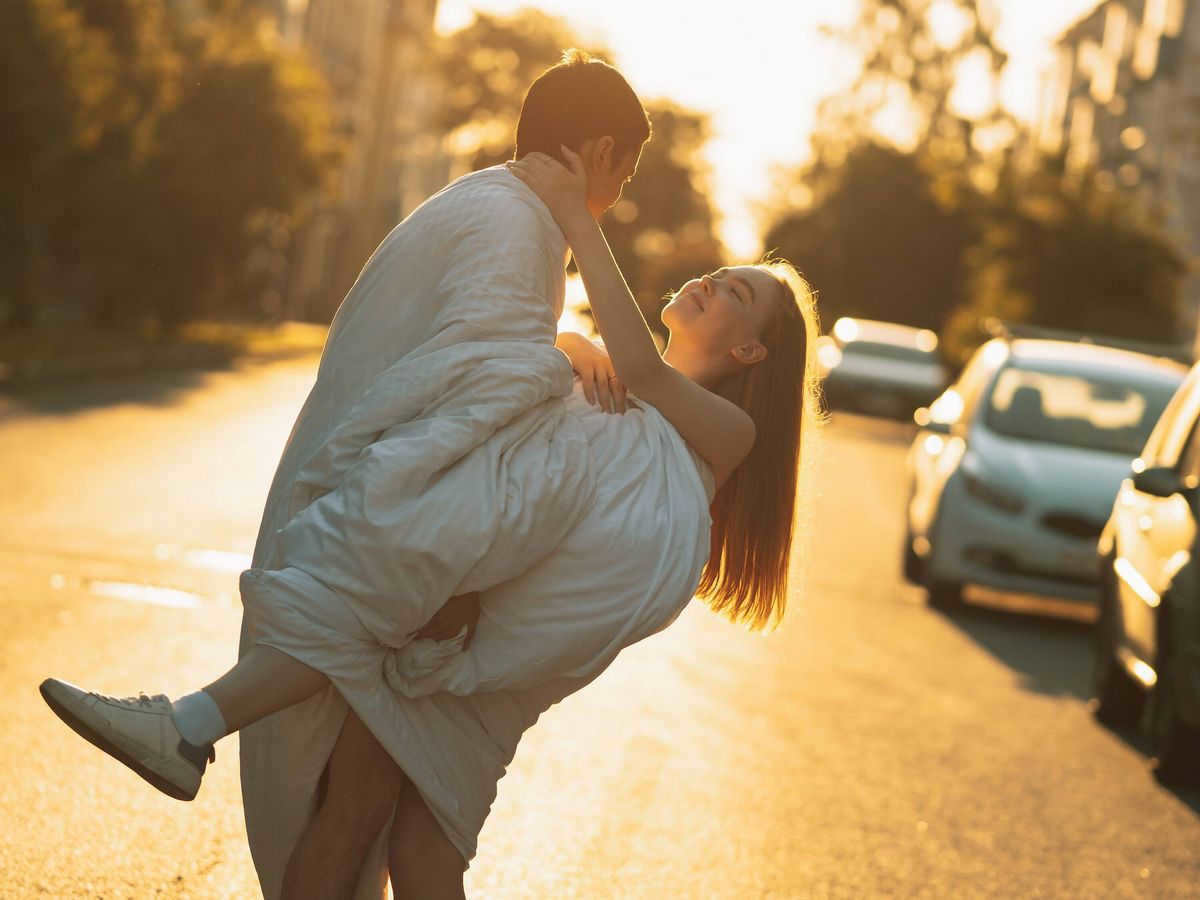
During the golden hour, there is no need to fear the direct sunlight or a harsh counterlight. The outcome will still be satisfying / Photo: Alisa Smirnova, Photosclad.Expert
Understanding the concept of the blue hour in photography
The blue hour refers to the period right before sunrise or after sunset. The blue hour is characterized by the sun being hidden behind the horizon, illuminating the sky while leaving the earth in darkness. This creates a beautiful color and brightness in the sky that is ideal for photography.
The blue hour is traditionally regarded as a prime time for capturing night landscapes as the sky is dark but not completely black, creating a more favorable appearance. Additionally, if you are shooting in an urban area, the streetlights and other sources of light are usually turned on during this time, which can further enhance the photographer’s images.

A typical landscape shot in the blue hour / Photo: unsplash.com
One of the challenges when capturing photos during the golden and blue hour is timing it just right. The duration of the blue and golden hour varies depending on your location and the time of year.
To make it easier, you can use a dedicated app to calculate the golden and blue hour. For example, PhotoPills is a great option. It has a user-friendly interface and is available for both iPhone and Android devices.
The app automatically detects your location and displays the sun’s position at a specific time. The only downside is that there is no Russian version available. However, you don’t need advanced English skills to identify the golden and blue hours as the app has a user-friendly interface. The app is priced at around $10. If you’re looking for a free alternative, you can try using SunCalc.

On August 22, 2022, at our latitude, there are two periods of beautiful lighting and two periods of serene lighting, with each period lasting approximately 30 minutes / Illustration: Alisa Smirnova, Photosklad.Expert
Those living in the northern regions have a particularly interesting experience. In the southern regions, the sun travels across the sky in a direct path, causing darkness to fall quickly, resulting in the golden and blue hours passing by swiftly. However, in the north, during the summer months, the sun sets on a vast arc (in the far north, it simply moves in a circular motion, descending towards the horizon but never fully setting), creating a longer twilight period and extending the duration of the golden and blue hours.
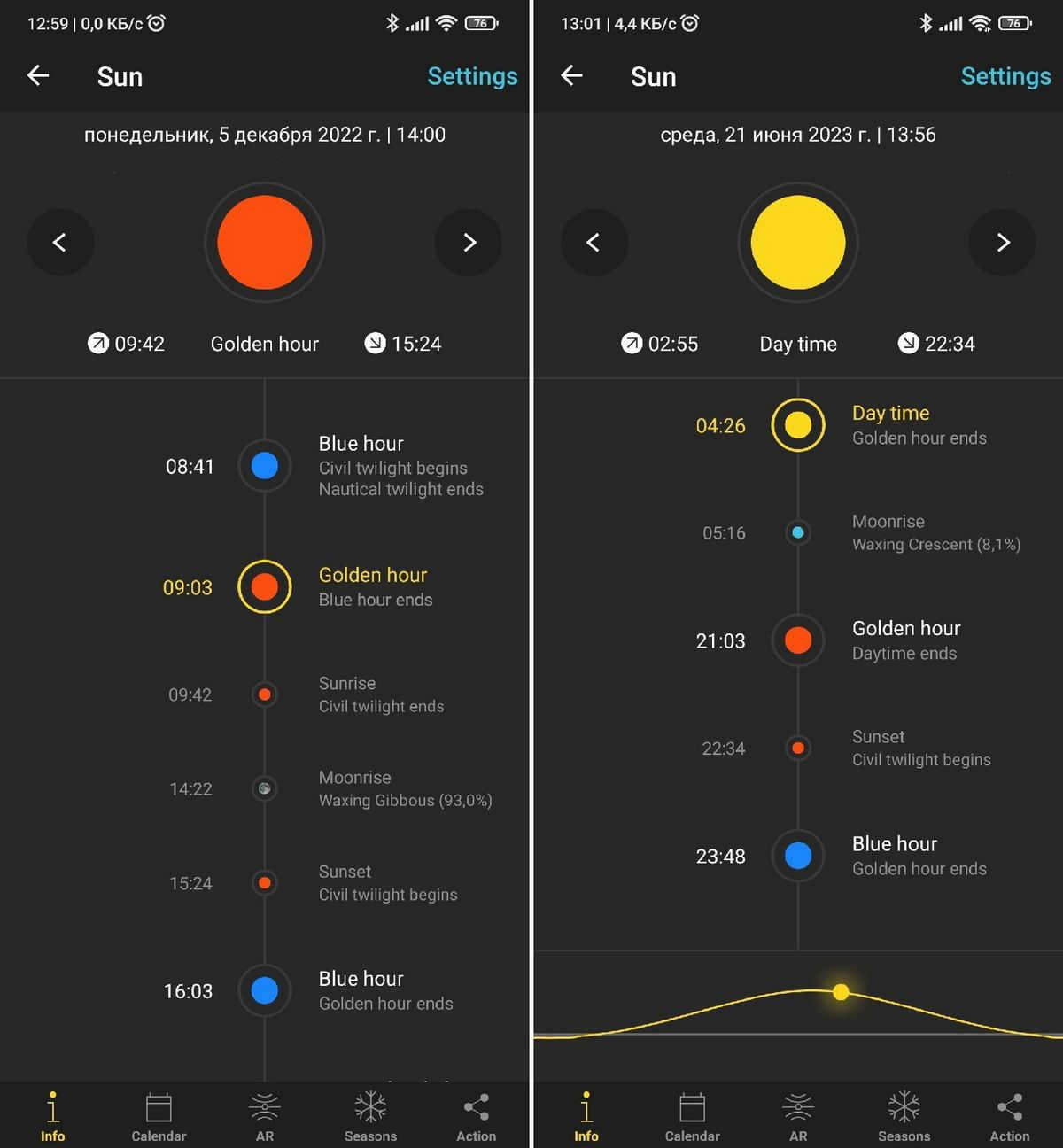
For instance, in December, at the 61st latitude, the golden hour extends throughout the entire duration of daylight, starting from 9 am and lasting until 3 pm. Similarly, during the month of June, the blue hour persists throughout the entire night, with no complete darkness. This is demonstrated in the accompanying illustration by Alisa Smirnova from Photosklad.Expert.
By now, you are aware of the timing for the blue and golden hour in your area, as well as their respective durations. This knowledge allows you to effectively plan your photography sessions. However, there are a few additional factors that you should take into consideration before embarking on your shoot.
First and foremost, both the blue and golden hour necessitate relatively clear skies, or at the very least, a varying amount of cloud cover. If the weather is overcast, then the aforementioned information will be of little consequence. In such conditions, the unique lighting associated with these special hours will be absent, and you will only have the soft, diffused light typical of a cloudy day.
Furthermore, it is important to take into account the landscape where you plan to capture images. If there are towering trees or structures obstructing the shooting area, it is optimal to commence shooting during the initial moments of the golden hour. It is highly recommended to also verify ahead of time if the desired shooting spot will not be situated in the shadowy confines of buildings or trees.
Tips for capturing photos during the golden hour
The golden hour presents a prime opportunity for photography, as nature itself conspires to make shooting easier for you. Here are some suggestions to consider during this magical time:
Experiment with backlighting. Combining backlight with the golden hour can yield stunning results. Don’t hesitate to position your main subjects in front of the sun, even if it means it will be in the frame. More often than not, the outcome will be breathtakingly beautiful.

The golden hour illuminates dandelions, poplar fluff, ripe willow-tea, and crumbly snow in a stunning way, creating a beautiful backlight effect. This magical time of day is perfect for capturing stunning photos. Photo by Alisa Smirnova, Fotosklad.Expert
Capture stunning silhouettes. The contrast between dark figures and the backdrop of the setting or rising sun adds a touch of elegance and variety to your photography.

One of the best angles to capture silhouettes is from a lower point / Photo: unsplash.com
Attempt to capture the beautiful flare. Various lenses can produce fascinating effects when the sun is positioned directly within the frame.
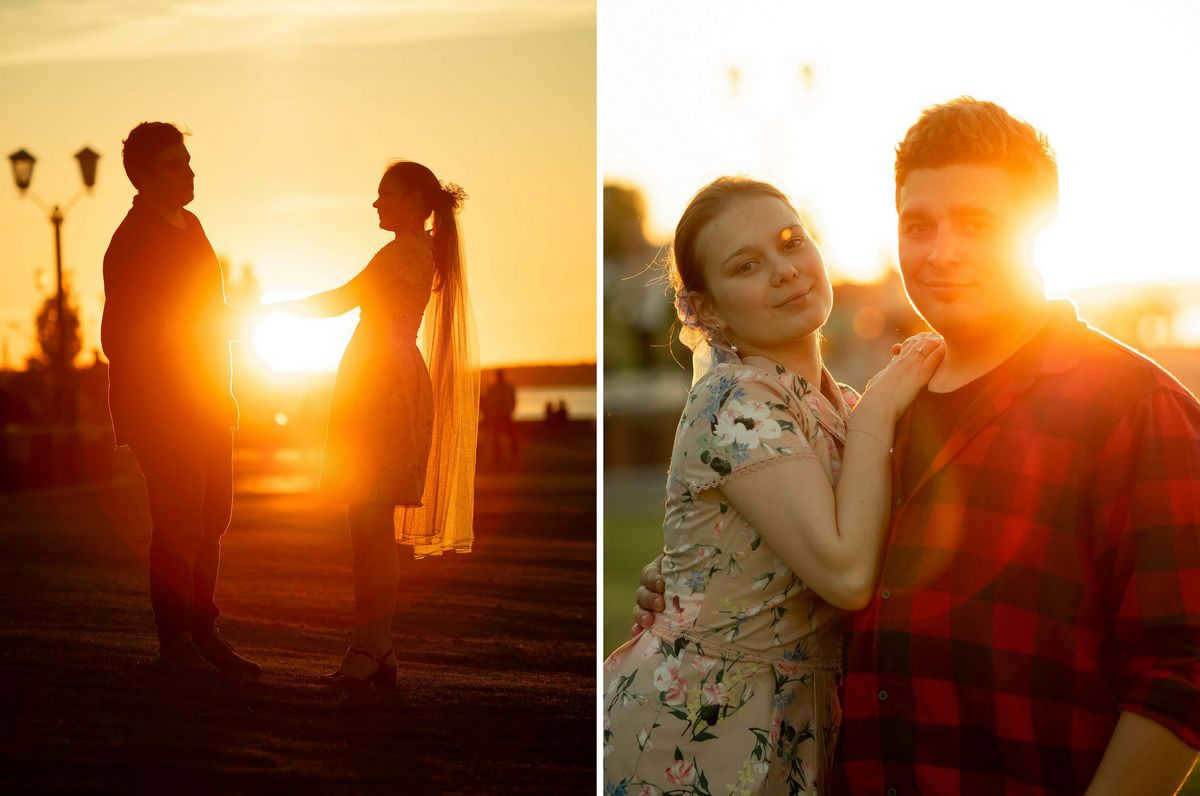
Photograph taken by Alisa Smirnova, Photosklad.Expert.
Seize the shadows. During the golden hour, shadows tend to be long and beautiful, providing an opportunity to capture interesting photos.
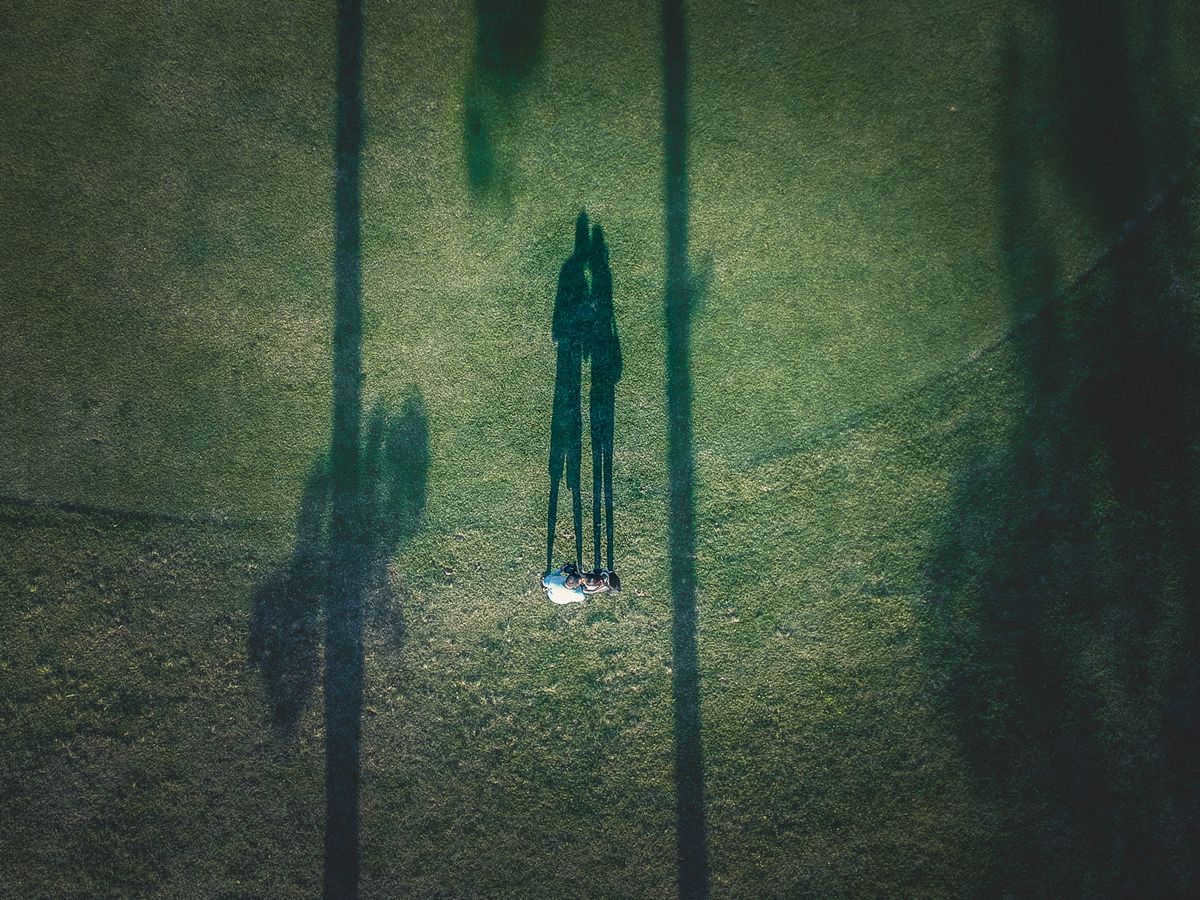
Using a drone, capture the timeless beauty of classic plots with intricate shadows. This stunning photograph was taken during the golden hour, a magical time when the lighting is perfect for capturing landscapes and urban scenery. Don’t limit yourself to just portraits, as this is an ideal moment for all types of photography.

The golden hour is not limited to portraits or the summer season. Even grasses covered in hoarfrost can make for a stunning subject when illuminated by the early morning sun. Photo credit: Alisa Smirnova, Fotosklad.Expert
Additionally, here are a few tips to keep in mind when shooting during the golden hour:
- To capture silhouettes, it is recommended to set the exposure compensation to -1. This helps prevent the camera’s automatic settings from overexposing the frame.
- Manually adjust the white balance. Automatic settings may try to compensate for the golden hour’s warm tones by making the photos appear too blue.
- If you’re shooting a backlit portrait and want to enhance the facial features, consider using a reflector to bounce light onto the subject.
The blue hour is a challenging and meticulous period, necessitating a higher level of expertise. Typically, landscapes are captured during the blue hour.
Tips for Capturing the Blue Hour
When shooting during the blue hour, a tripod is highly recommended, just as it would be for any landscape photography. It enables you to achieve a sharper image with minimal noise.

A typical scene captured during the blue hour / Photo: unsplash.com
To achieve the optimal camera settings for capturing images during the blue hour, it is recommended to start with adjusting the ISO value. Set it to the minimum, which is usually around 100 or 200. The aperture value can vary depending on the composition of the scene. If there are multiple elements in different distances, such as flowers in the foreground, bridges in the middle, and a lake in the distance, it is advisable to use a smaller aperture value. However, if the scene does not have multiple elements, you can work with a wider aperture.
When shooting landscapes with a tripod, the shutter speed becomes less important. You can use a longer shutter speed without worrying about any harm to the image. However, if you are shooting handheld, it is crucial to select a shutter speed that avoids any blurring caused by hand movement.
- It is advisable to capture images in RAW format, as it provides more flexibility during post-processing;
- In case you encounter difficulties with autofocus in low light conditions, consider manually focusing;
- Make sure to carry a flashlight during the shoot to avoid any accidents or damage to your camera.
The blue hour offers the most captivating views of objects illuminated by artificial lights, such as buildings, monuments, piers, bridges, lighthouses, and more.
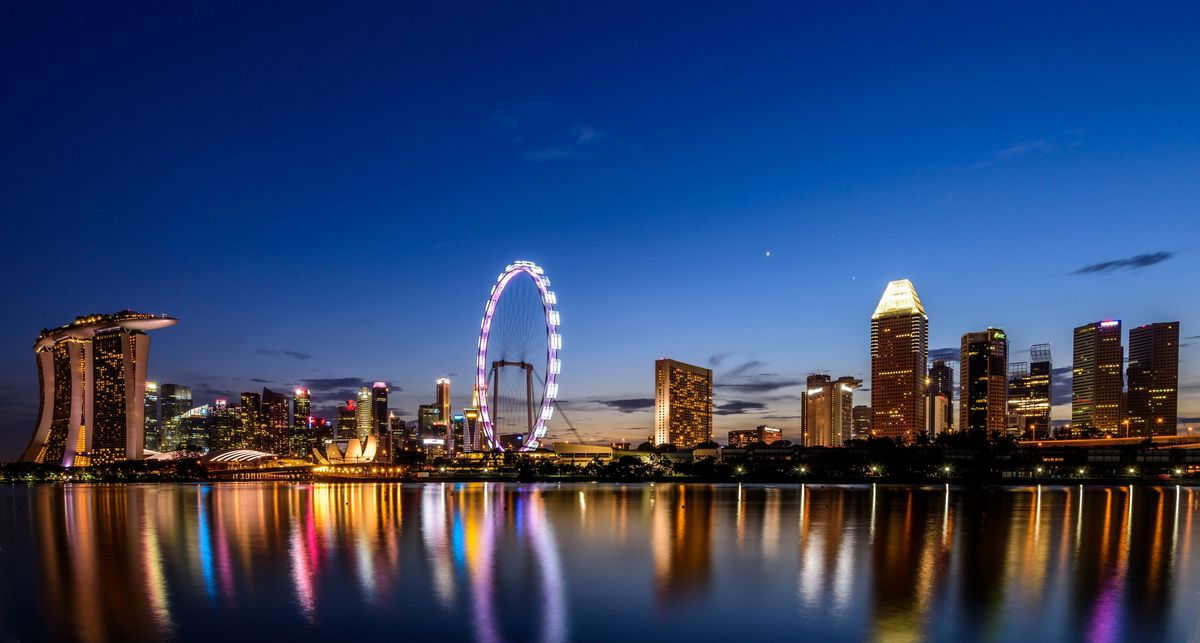
The blue hour, also known as twilight, is a magical time of day for capturing stunning photographs of the city at night. During this time, the sky takes on a beautiful blue hue, creating a unique atmosphere. However, when shooting in the blue hour, it’s important to have additional lighting as the natural light reflected from the sky may not be sufficient. To enhance your portraits and cityscapes, you can use a combination of flash and constant light sources.

There are two sources of illumination: a flash positioned behind the shala and a permanent light located at the top right / Photo: Alisa Smirnova, Photosklad.Expert
When capturing portraits during the blue hour using artificial lighting, it is crucial to adjust the settings in a way that the flash does not overpower the subtle light of the sky. We have provided further information on how to achieve a balance between the flash and the ambient light in the following article.
On January 24, 2023, the Doomsday Clock was adjusted. The hands now indicate 90 seconds until midnight. Over the past three years, the Clock has consistently displayed a reading of 100 seconds until midnight.
What exactly is the Doomsday Clock? What factors contributed to the decision to change its position? And when was humanity at its closest to catastrophe? Find out in the REN TV feature.
What is the Doomsday Clock
The Doomsday Clock serves as a representation of the global political tension and the advancements made by countries in the field of weapons of mass destruction. It aims to illustrate the proximity of humanity to self-destruction through the use of perilous technologies, and serves as a warning of the limited time remaining until the metaphorical midnight.
Midnight symbolizes the final moment: when the clock’s hand reaches exactly 12, it signifies the catastrophic annihilation of humanity.
Who is credited with creating the Doomsday Clock?
The Doomsday Clock was created by physicists involved in the Manhattan Project, which aimed to develop the first atomic bomb in the United States. The creation of the Doomsday Clock can be traced back to 1947 when it was featured on the cover of the scientific journal Bulletin of the Atomic Scientists. The artwork for the clock was contributed by American artist Mertil Langsdorf.
What is the Purpose of the Doomsday Clock?
Scientists created the Doomsday Clock with the intention of raising awareness about the risks associated with the spread and utilization of nuclear weapons. They believed that this posed the most significant threat to the well-being of humanity.
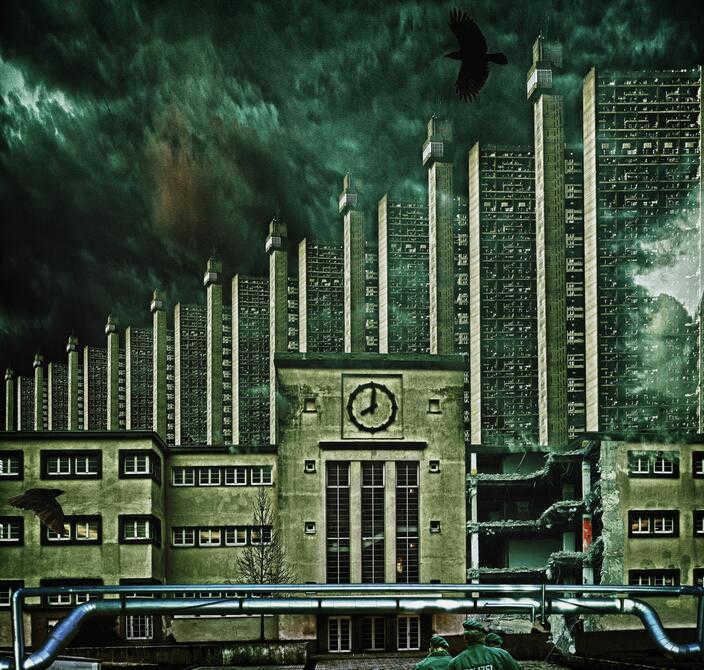
“The Bulletin of the Atomic Scientists,” the publication that features “The Watch” on its cover, informs its audience, including readers, fellow professionals, and policymakers, about the potential risks and future possibilities associated with nuclear technology. Furthermore, the magazine has started including articles on topics such as climate change and advancements in the field of information technology, both of which have the potential to lead to catastrophic events. Scientists emphasize that the Doomsday Clock is not intended to instill fear in people. Instead, its purpose is to motivate action and efforts aimed at preserving humanity.”
What is the current reading of the Doomsday Clock?
In 2023, the Doomsday Clock was adjusted to indicate that we are now 90 seconds away from the impending catastrophe. This represents a change of 10 seconds, bringing us even closer to midnight.
This update by the project officials reflects their evaluation of various factors, including biological threats, the climate crisis, Russia’s actions in Ukraine, nuclear proliferation, state-sponsored disinformation campaigns, and disruptive technologies.
When the Doomsday Clock is updated
Originally, Yevgeny Rabinovich, the editor of the Bulletin, was responsible for determining the symbolic time remaining before the apocalypse. Being a prominent figure in the international disarmament movement, he engaged in active discussions with policy experts and scientists worldwide to establish the clock’s setting, which he would then elaborate on in the pages of the journal.
Following Rabinovich’s passing in 1973, the authority for setting the clock was transferred to the Bulletin’s Council on Science and Security. This council, composed of 18 experts from various backgrounds including politics, diplomacy, military history, and nuclear science, convenes twice a year to review past events and trends before making their decision. The final position of the clock’s hands is announced at the end of January.
In 1947, the Doomsday Clock displayed a time of 23:53. Its first adjustment occurred in 1949, following the atomic bomb tests in the Soviet Union, causing the hand to abruptly move three minutes forward.
Between 1953 and 1960, the clock was set as close to 00:00 as possible, showing a time of 23:58. This was due to the testing of thermonuclear bombs by both the USA and the USSR, which occurred just a few months apart.
In 1962, the world experienced the Cuban Missile Crisis, bringing the threat of a nuclear war closer than ever before. However, the Doomsday Clock was not adjusted during this time, as the crisis lasted only a month.
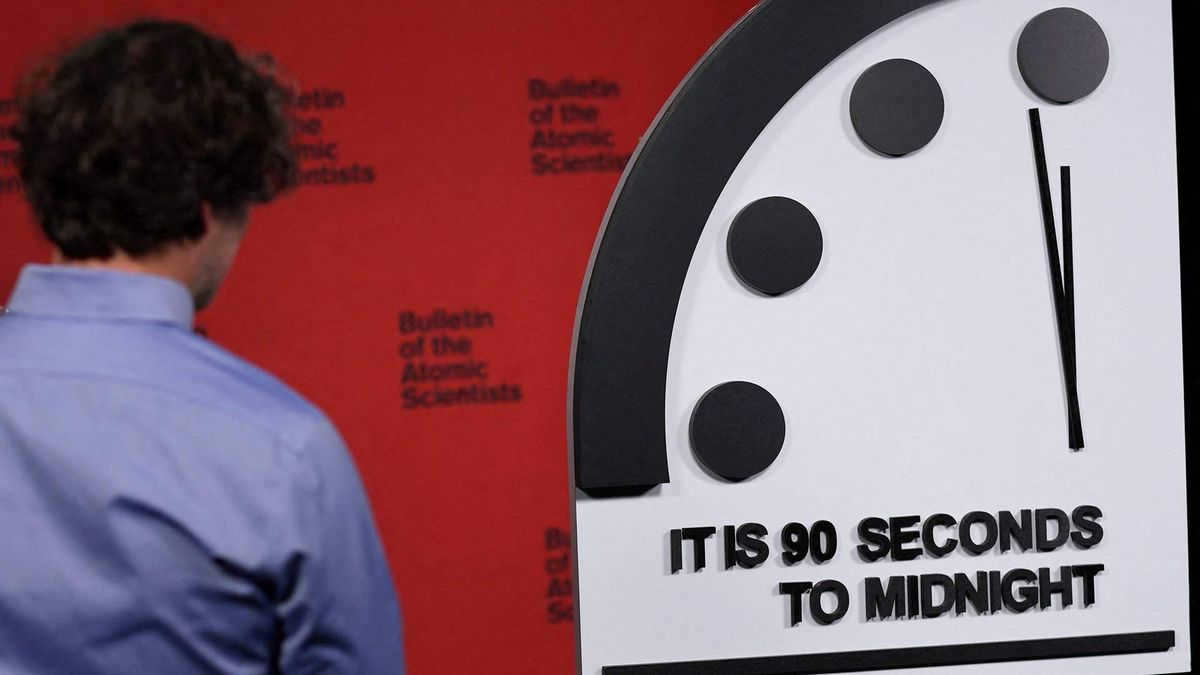
On January 24, 2023, the Doomsday Clock’s hands were advanced by 10 seconds. “of the Doomsday Clock,” the clock’s time symbolizes and represents the global tension. Currently, the clock indicates 90 seconds until the so-called nuclear midnight – the moment of a nuclear catastrophe. This is the closest the clock has ever been set to a disaster. Izvestia investigated who is responsible for adjusting the clock and what it signifies.
Origin and Significance of Clocks
«The Doomsday Clock» is a representation of the intense global tensions and advancements in nuclear weaponry. Its inception dates back to 1947 when it graced the cover of The Bulletin of the Atomic Scientists, a publication founded by Albert Einstein and a consortium of nuclear scientists. The clock’s symbolic midnight denotes humanity’s potential demise, resulting from self-inflicted annihilation via weapons of mass destruction. Its purpose is to serve as a constant reminder of the perils associated with nuclear armament and to compel the world to address the underlying issues that could lead to a catastrophic event. Notably, in recent times, the clock’s hands have only moved forward.
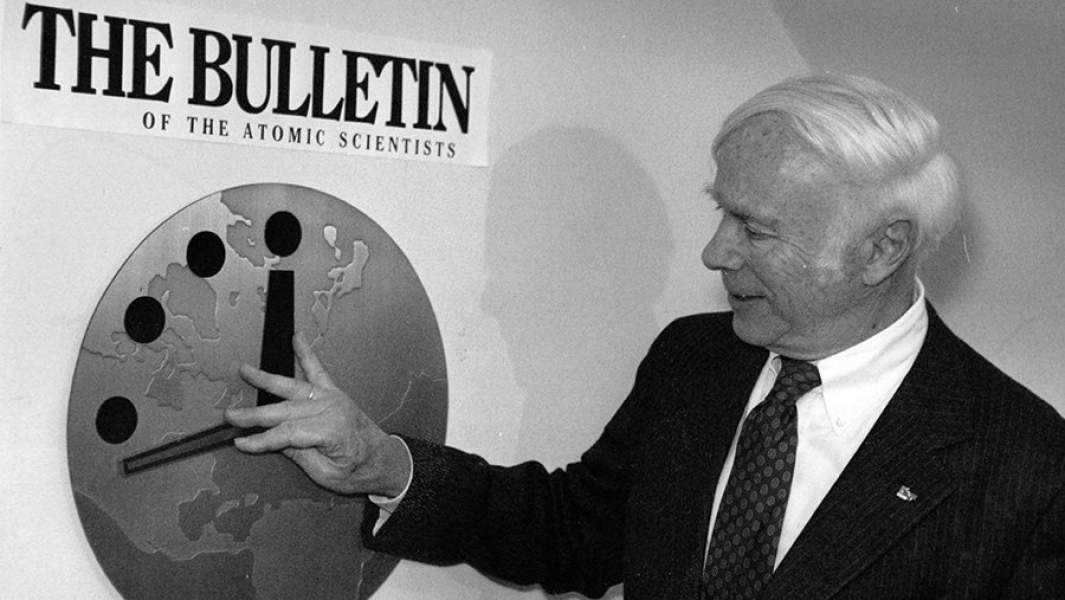
Dr. Leonard Reeser, the leader of the Bulletin of the Atomic Scientists, adjusted the position of the Doomsday Clock by 17 minutes, bringing it closer to midnight, on November 26, 1991.
The previous method of adjusting clock hands
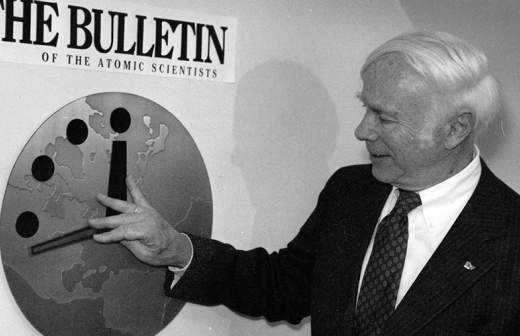
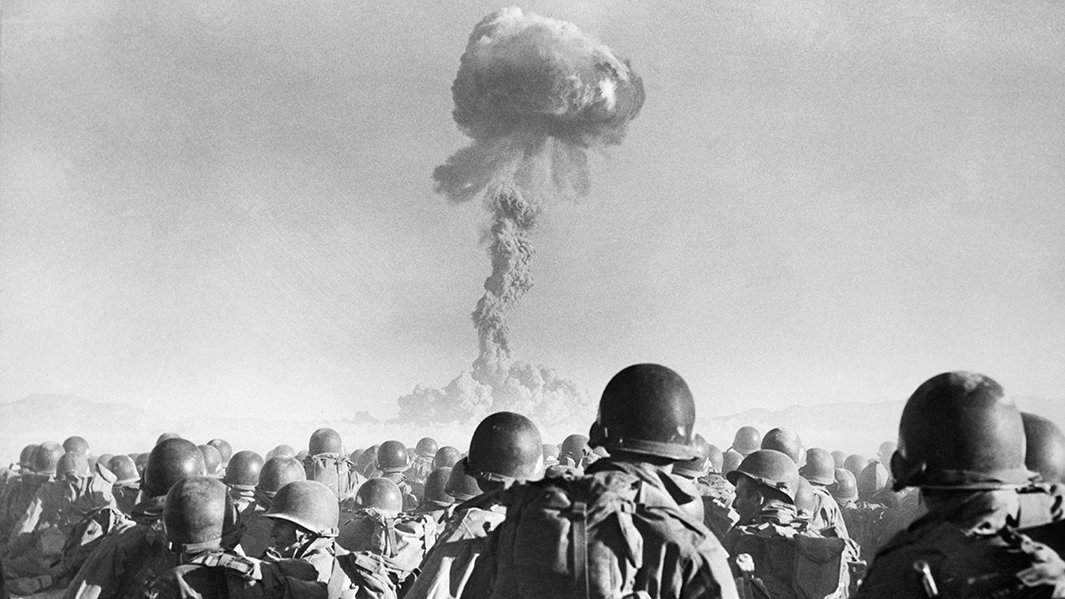
In 1991, a significant event occurred that brought a sense of calmness. The clock’s hands moved to 23:43, symbolizing a turning point in history. This coincided with the signing of the Strategic Arms Reduction Treaty (START-I) between the USSR and the US, marking the end of the Cold War.
The Reason for the Current Translation of the “Doomsday Clock”
Originally, the “Doomsday Clock” served as a metaphorical representation of the threats posed by a global nuclear catastrophe. However, in 2007, experts expanded its scope to include other risks facing humanity, such as climate change, biological threats like COVID-19, and the erosion of “global norms and institutions.”
June 21st marks the peak of daylight hours for those living in the northern hemisphere. This day is also known as the summer solstice, which is an important event in astronomy.
What is the Summer Solstice?
The summer solstice occurs when the Earth’s axis of rotation tilts towards the Sun at its maximum angle of 23.4 degrees. This means that on this day, the Northern Hemisphere is almost entirely facing the Sun.
It’s worth noting that throughout the year, the Sun appears at different heights above the horizon. On June 21, 2022, it will reach its highest point, known as the “point of the ecliptic”. The ecliptic is the path that the Sun appears to follow on the celestial sphere as seen from Earth.
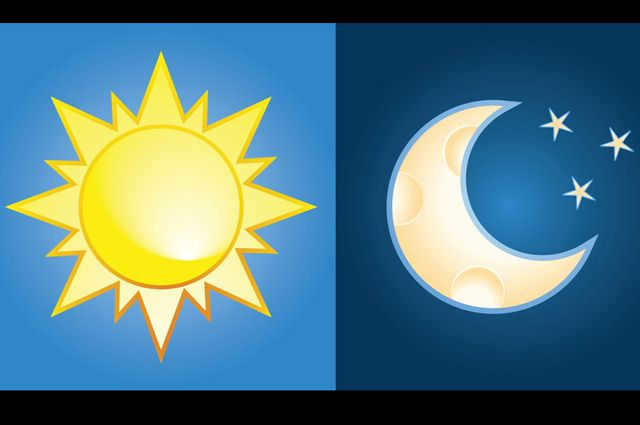
Furthermore, for a number of days, the Sun’s height above the skyline will stay relatively consistent, thus earning the term – solstice. Following this, the celestial body commences a backward and gradual descent along the ecliptic. In the North Hemisphere, the daylight will diminish while the nighttime will expand. Conversely, in the South Hemisphere, the situation is reversed.
What is the duration of the longest day?
The longest day in a year at the latitude of Moscow will last for 17 hours and 33 minutes.
The duration of the day varies in different regions of Russia. The further north the cities are located, the longer the daylight hours will be. In the northern latitudes of the country, there will be white nights, and in the Polar Regions, there will be a polar day, where there is continuous daylight and the sun does not set below the horizon at all.
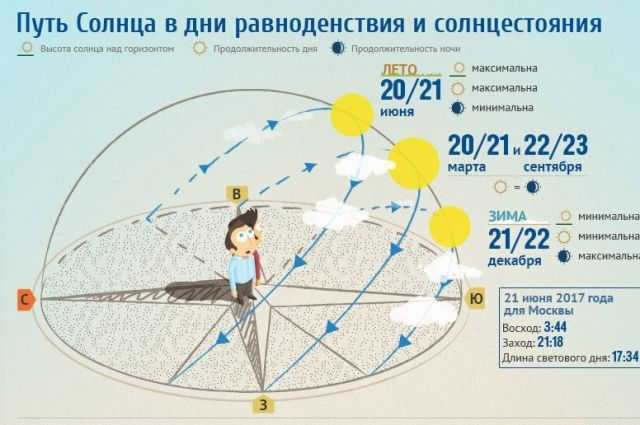
Consequently, in Moscow on June 21st, the sun ascended at 3:44 AM, and will descend below the horizon at 9:18 PM. In St. Petersburg, the sunrise commenced at 3:35 AM and the sunset at 10:25 PM, resulting in an 18-hour and 50-minute day duration.





